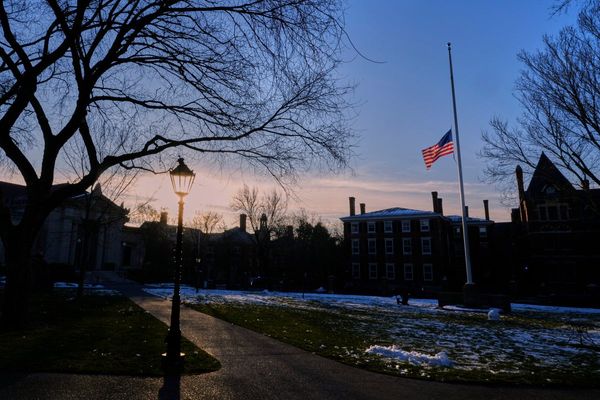
Under the warm autumn sun, looking out over the lake, I’m sipping tart, refreshing apple-secco. It’s a sparkling prosecco-like aperitif, but made from apples instead of grapes. I eat a few cinnamon apple chips, then move on to the hard stuff: brandy made from heritage apple varieties.
If you hadn’t guessed, apples are big business around here. I’m on a walking trip along the shores of Lake Constance, on Germany’s southern border. About 250,000 tonnes of apples are harvested in this region each year. Our trip has coincided with the annual gourmet event, when local producers set up stalls and sell their wares along 9 miles (15km) of the SeeGang hiking trail between Überlingen, Sipplingen and Bodman-Ludwigshafen (this year it takes place on 12 October). If apples aren’t your jam, there’s also pear-secco and spirits made from everything from plums, cherries and blackcurrants to jerusalem artichokes. Hikers can also sample food such as smoked sausages, cheeses, onion tarts, and homemade cakes and pies.
Lake Constance’s tourism tagline is: “Four countries – one lake”. Germany, Austria and Switzerland all meet at the lake, while Lichtenstein is just a half-hour drive away. On our short break, my boyfriend and I stick to the German section, but those with more time could easily visit three or four countries. There is a 160-mile cycling circuit around the lake, which can be divided into four to eight stages; and week-long foodie, active and highlights itineraries, all doable using public transport. The Bodensee ticket gives unlimited travel on trains, buses and ferries (from €48 for three days), while the Bodensee Card Plus also includes entry to 160 attractions (from €78 for three days; €124 for seven).
We started our trip in Konstanz (anglicised as Constance), the biggest city on the lake. We took a guided tour to learn about the city’s long history – most notably the Council of Constance of 1414-1418, a series of meetings to resolve years of schism within the Catholic church – and visit its landmarks: the council building itself; Imperia, a controversial 9-metre (30ft) rotating waterfront statue of a voluptuous woman, believed to be a courtesan, holding a king and a pope in her hands, created in 1993 by Peter Lenk; the münster (cathedral) and its 78-metre tower with views over the city, lake and mountains; and the charming Niederburg district, with its cobbled alleyways and houses from the late Middle Ages.
While the sun was shining, we ate outside by the water at Constanzer Wirtshaus, an inn in a former officers’ mess, built for Kaiser Wilhelm II in 1899. As well as hearty meat dishes such as knuckle of pork, shredded ox and beef roulade, I was delighted to find delicious vegan versions of regional dishes. Maultaschen, usually meat-filled dumplings, were made with plant-based mince and served with a potato and cucumber salad and vegetable gravy.
When it rained, we took refuge in Brauhaus Joh Albrecht, a brewery and restaurant in a medieval building. Alongside its core menu of sausages, schnitzels and Swabian (southwest German) specialities such as käsespätzle (pasta with cheese and roasted onions), it serves seasonal dishes. The pumpkin soup with giant pretzels was proving popular; this autumn there is a chanterelle mushroom menu, pleasingly called a pfifferlingskarte in German. We tried the malty Copper beer; later in the year, the dark, strong Xmas Bock will go on sale.
After all this indulgence, it was time to walk to our campsite, nearly 19km (12 miles) around the lake. Just outside the city, we reached the inviting Bodensee-Therme baths, with indoor and outdoor pools, saunas and steam rooms. We pressed on and passed Mainau, known as the flower island. In September, the dahlias are in full bloom and the katsura trees give off scents of gingerbread and caramel; the arboretum is at its leaf-peeping peak in October; and the illuminated Christmas garden opens on 18 November.
We left the lake and headed a little way into the countryside, walking through meadows and climbing a couple of hills, before strolling through the lakeside village of Dingelsdorf to the Campingplatz Klausenhorn just beyond. The nights were getting chilly, so we were glad to be staying in a cosy sleeping barrel rather than a tent. These wooden structures are supposedly based on the accommodation at the Council of Constance – but presumably a lot warmer and cleaner. The campsite has a cafe, sells fresh bread in the mornings and hosts a market on Fridays. Ufer 39, a restaurant a short walk away, serves local dishes plus pizza and pasta, in a modern space with a vaulted ceiling.
The next morning, we took a boat from Dingelsdorf harbour across the lake to Überlingen, a town with a medieval quarter and the longest promenade on the lake. This was the start of our gourmet walk – shorter (at about 7 miles) than the previous day’s route but more challenging – traversing ravines, forests and, of course, orchards. A particularly memorable stop was at the Torkelbühl viewpoint, where the Kress Winery was serving wine and snacks to accompany the incredible lake panorama.
Beyond Sipplingen, we were starting to tire when we heard the rousing sound of an oompah band. We headed towards the music and emerged at the Höhengasthaus Haldenhof, a picture-perfect mountain inn whose sun terrace has views all the way to the Alps. Fortified by more excellent German beer, it was a short hop to our journey’s end, the Seehotel Adler in Bodman-Ludwigshafen. With a heated outdoor pool and three saunas, it was certainly a good place to relax after a hike. The restaurant serves pike and char fish alongside pork cheeks and steaks, and more excellent vegetarian options such as panzerotti (mini calzones) stuffed with porcini and truffles, with thyme butter.
We’d packed a lot in, but there was so much left to see: the island old town of Lindau; the Middle Ages castle at Meersburg; the Zeppelin city of Friedrichshafen. And that’s without even leaving Germany. We’re going to need more apple-secco …
The trip was provided by the German National Tourist Office. This year’s gourmet hiking event is on 12 October. Campingplatz Klausenhorn has sleeping barrels from €70, sleeping two adults and two children; the campsite is open until 15 October and reopens in March. The Seehotel Adler has doubles from €160 B&B







